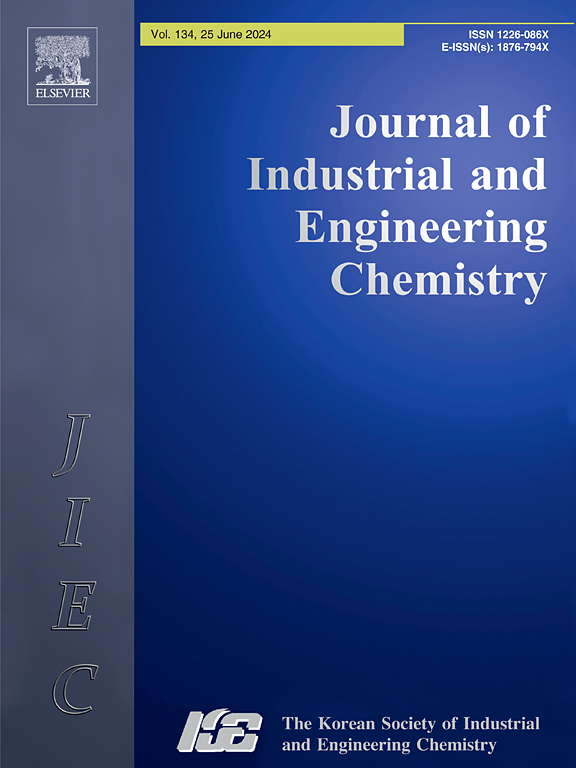Deep remediation of oil spill based on the photocatalytic degradation of solar light-driven floating C-doped TiO2/Sepiolite composites
IF 5.9
3区 工程技术
Q1 CHEMISTRY, MULTIDISCIPLINARY
Journal of Industrial and Engineering Chemistry
Pub Date : 2024-10-28
DOI:10.1016/j.jiec.2024.10.054
引用次数: 0
Abstract
This study developed a novel C-doped floating-type TiO2/sepiolite composite. C-TiO2/Sep composites were synthesized using various carbon sources (glucose, acetic acid, acetylacetone) through a simple hydrothermal method, with a Ti to C molar ratio of 5 and a Ti to sepiolite ratio of 40 mmol/g. The floatable composites were obtained via hydrophobic modification using a stearic acid to product ratio of 0.7 mmol/g. The resulting composites were characterized using XRD, SEM, PL, XPS, and UV–vis. The results indicate that the chemical and morphological properties of the composites are significantly affected by the carbon source. Compared to undoped samples, the C-doped samples exhibit improved anatase phase stability and reduced grain sizes. The incorporation of C is predominantly exhibited as C-O-Ti-O, and the surfaces of the samples are modified with carbon photosensitizers. PL spectra and photocatalytic activity tests under visible light reveal that the CTHS-GLU (Hydrophobic Sepiolite with Carbon-Doped TiO2 Using Glucose as the Carbon Precursor) sample achieved an 80.78 % oil removal rate, demonstrating the best efficiency in oil spill remediation, which is attributed to C-doping’s reduced band gap, high adsorption capacity, uniform TiO2 distribution, and enhanced surface hydrophobicity.
求助全文
约1分钟内获得全文
求助全文
来源期刊
CiteScore
10.40
自引率
6.60%
发文量
639
审稿时长
29 days
期刊介绍:
Journal of Industrial and Engineering Chemistry is published monthly in English by the Korean Society of Industrial and Engineering Chemistry. JIEC brings together multidisciplinary interests in one journal and is to disseminate information on all aspects of research and development in industrial and engineering chemistry. Contributions in the form of research articles, short communications, notes and reviews are considered for publication. The editors welcome original contributions that have not been and are not to be published elsewhere. Instruction to authors and a manuscript submissions form are printed at the end of each issue. Bulk reprints of individual articles can be ordered. This publication is partially supported by Korea Research Foundation and the Korean Federation of Science and Technology Societies.

 求助内容:
求助内容: 应助结果提醒方式:
应助结果提醒方式:


